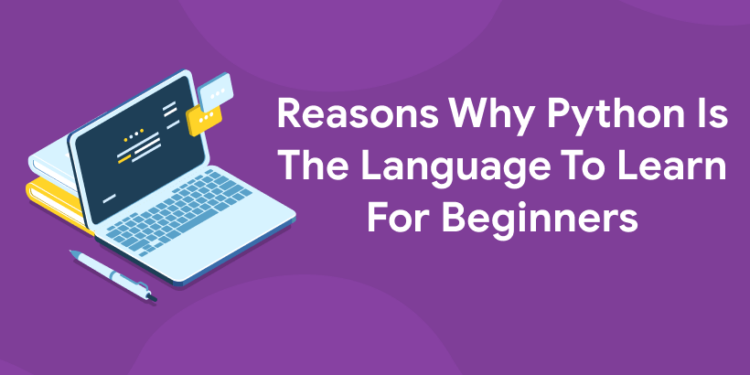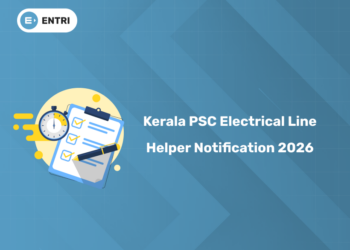Table of Contents
Although you might be tempted to jump straight into more complex programming languages like C++, Java, or Swift, you’ll find that it’s actually easier to start with Python. This programming language has been around since 1991 and has become increasingly popular in the modern-day due to its flexibility and ease of use for beginners. Here are 10 reasons why Python is the language to learn for beginners looking to get started in coding.
1) Easy to Use
Python is an easy-to-use programming language and one of its best features is that it has pretty much no learning curve. You can easily start creating programs from day one! In fact, you’ll be amazed at how quickly you’ll be able to get your first program up and running. Just follow a few basic instructions, create your code and run it. As soon as you finish your program will work perfectly on your screen. No compiling or installation is required. It couldn’t be easier! After learning only five characters (four for Hello) you can start building amazing things with nothing more than writing and testing code with little difficulty or stress involved in any stage of doing so.
2) Has An Active Community
1: Which of the following data types is immutable in Python?
Have you ever had a question about how to program in X and struggled to find an answer? Chances are there’s already a thread on Stack Overflow, with hundreds of answers, ready for you. It may not be one person’s pet project (which can be a good or bad thing depending on your view) but it has an active community that makes up for that. There are hundreds of tutorials online, as well as plenty of courses and books if you prefer learning from print materials. It means no ugly surprises: Knowing when it comes to programming languages what you get out is what you put in isn’t necessarily true in other areas of life – especially with language learning!
Learn Coding in your Language! Enroll Here!
🚀 Start Coding Today! Enroll Now with Easy EMI Options. 💳✨
Gain expertise in Django and open doors to lucrative opportunities in web development.
Start Learning With EMI Payment Options3) A Large Variety Of Libraries
Learning a programming language is hard enough, so if you’re looking to learn a new one, it’s best to choose one that has many libraries available. With more libraries and tools out there, it means that you can use your newfound skills on more things — not just in academic courses. As of now, Python is one of only four languages supported by Microsoft Azure Machine Learning, which makes machine learning easier than ever before. It also boasts an active GitHub community with over 43K repositories!
4) Clean Syntax
New programmers struggle with syntax for two main reasons: It’s complicated, and there’s a lot of it. One common complaint about C++ is that its syntax was designed to make it hard to write bad code, but in doing so made it very hard to write good code. Even highly experienced programmers say that reading someone else’s C++ makes their eyes glaze over—not because they can’t understand what’s going on, but because they’re not interested in trying. Compare that with Python, which has been called executable pseudocode. Since there are no curly braces or semicolons needed at all in most cases, you can get rid of a lot of clutter that obscures what your program is actually doing.
5) Has powerful data analysis capabilities
Unlike other popular languages, Python has advanced capabilities for working with data. Its panda package is ideal for manipulating and exploring large datasets. It’s also great for scientific work. If you’re working with data of any size, it’s a good idea to become familiar with some of its unique strengths. Its libraries are powerful, easy to learn, and effective. This will help you crunch data faster than any other language available today.
Learn to code from industry experts! Enroll here
🚀 Start Coding Today! Enroll Now with Easy EMI Options. 💳✨
Gain expertise in Django and open doors to lucrative opportunities in web development.
Start Learning With EMI Payment Options6) Simple Syntax
Start coding in less than 15 minutes. Pick up a book, head to Tutorialspoint or Youtube, and you’ll find yourself writing your first program in no time. And once you do, you’ll discover that programming is fun and exciting—all because of Python’s simple syntax. It’s not like other languages that feel like they were made for people who know how to program already. Instead, it was designed so anyone can dive right in without getting caught up in confusing terms and unnecessary complications. If you want to build software but don’t know where to start, Python is your gateway language; it opens doors into big data, web development, and analytics that would otherwise be closed off by jargon or steep learning curves.
7) Dynamic Typing Makes Debugging Easier
Debugging dynamic-typed languages is much easier than debugging statically typed languages. Without having to declare variable types and possibly going through tedious type checking (like in a language like Java), dynamic typing allows you to get right into fixing your errors. This might seem like an irrelevant benefit if you’re a beginner, but once you start dealing with bigger projects, you’ll have no choice but to love it. Don’t take my word for it; take Guido van Rossum’s: the ease of writing and maintaining a dynamically typed program outweighs its performance costs.
8) Multi-paradigm Language Allows You To Choose What Works Best For You
While other languages may be more suited to a particular type of development, Python supports multiple programming paradigms, which is why it’s one of the most popular languages for beginners. It allows you to choose what works best for you, rather than fitting into your way of thinking. Learning how to code in other languages helps immensely when it comes to coding in Python. You can read more about different programming paradigms here.
Grab the opportunity to learn Python with Entri! Click Here
9) Free and Open Source Software, Suitable For Personal, Commercial, Academic Use, and More.
This license is one of three that are approved by OSI, and it’s very friendly to beginners. Its open-source software clause allows you to use it for commercial applications—even if you’re not a big corporation or working in an enterprise. That means your startup can use it for as long as you like without worrying about losing access later on. It’s also appropriate for non-commercial uses such as hobby projects, student labs, and extracurricular activities. This option makes sense if your personal goal is just to get started with programming rather than actually launch a product—and don’t mind having people copy your code for their own purposes. (The MIT License is also open source, but only free within certain constraints.)
10) Powerful real-world examples
If you’re a beginner, it can be hard to find real-world examples of how to apply your new skills. It can also be challenging to see how things connect together and why one approach is better than another in certain situations. Luckily, there are tons of books out there that go in-depth with real-world examples. If you’re just starting out with learning how to code, for instance, check out our list of best book recommendations for beginners. Even if you don’t know which language or framework you want to learn, any book from that list is sure to help! You might also enjoy reading popular tutorials written by industry leaders like our top 5 machine learning projects post or a beginner guide written by Facebook engineers on building an app using React Native. If you are interested to learn new coding skills, the Entri app will help you to acquire them very easily. Entri app is following a structural study plan so that the students can learn very easily. If you don’t have a coding background, it won’t be any problem. You can download the Entri app from the google play store and enroll in your favorite course.











